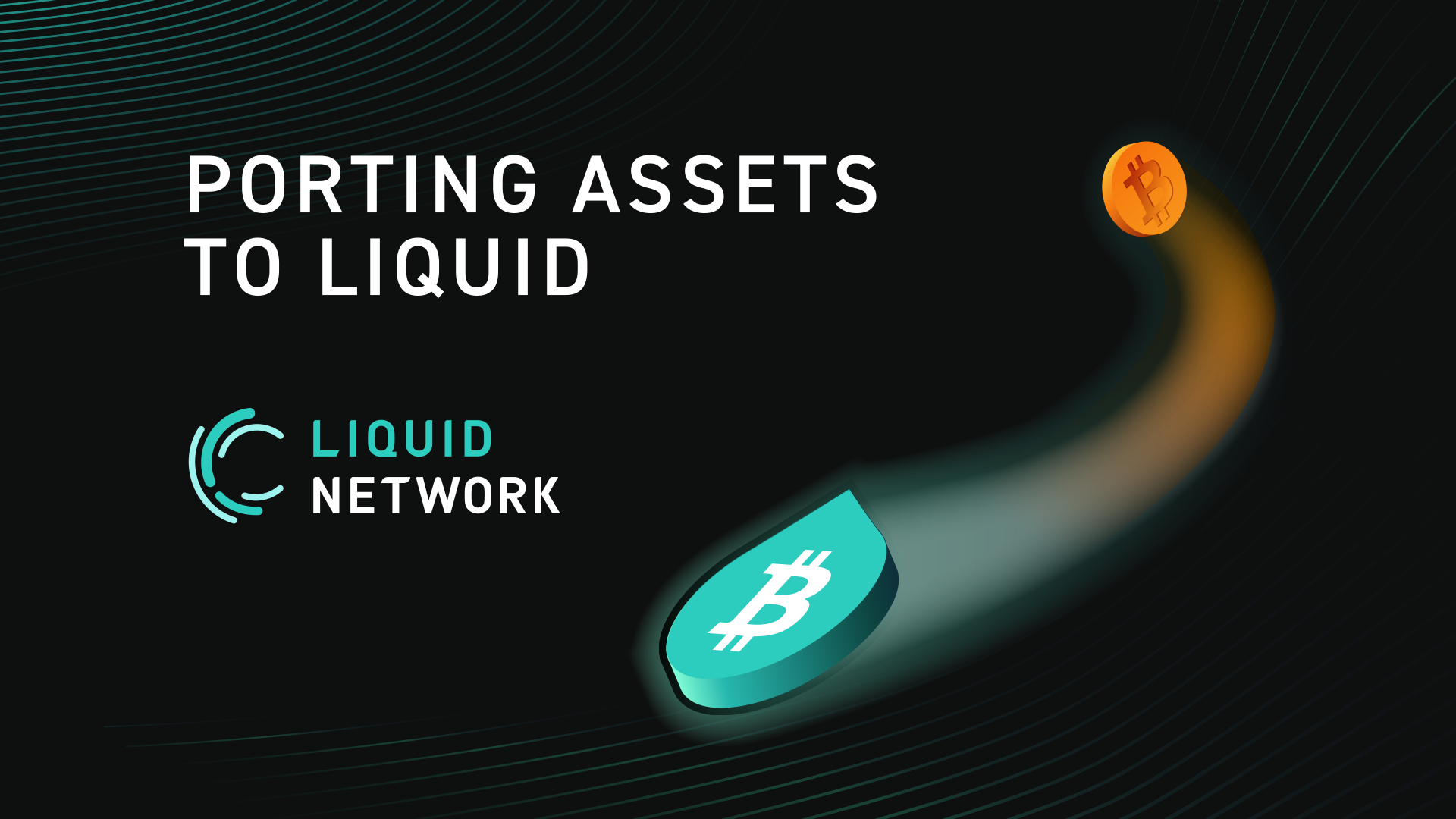I recently made a post on BOL2 suggesting a way an issuer might port assets to the Liquid Network from another blockchain. This article will explain more of the technical details about the process and further elaborate on the benefits Liquid can bring asset holders on the network.
One of the key differences between the Bitcoin blockchain and the Liquid Network is Liquid’s support for the issuance and management of first-class assets. Because this issuance process is permissionless, the possibility of porting assets from other chains becomes viable.
Liquid brings the benefits of low transaction fees (an affordance allowed by its federation model), Confidential Transactions (which hide the asset type and amount), and two-minute finality to all asset holders, along with the privacy and security we have all come to expect from Bitcoin-based blockchains.
Steps for Porting Your Asset
The steps needed for an issuer to port their asset to Liquid is very straightforward and can be done by following these simple steps:
- Issue the asset on the source blockchain
- Freeze the desired amount of the asset on the source blockchain
- Issue the desired amount of new proxy assets on Liquid
Note there are countless blockchains on the internet, each with its own asset issuance and management method, so I won't be going into much detail on the first two steps. If you are curious about a concrete example, I shared the steps to port an asset from Solana to Liquid in the original BOL2 thread as a quick reference guide. Asset issuance, on the other hand, is a concept we'll explore more and can be achieved within just a few minutes on Liquid.
Asset Issuance
The first and most user-friendly way to issue an asset is through Blockstream's Asset Issuer tool. Here you can issue standard assets and, soon, AMP assets as well. The website provides step-by-step instructions to seamlessly guide issuers through the issuance and registration process of their asset. Fees are currently covered by Blockstream when using the tool, and all that is needed is an email to log in and a Liquid wallet to receive the newly issued asset.
For those who prefer to interact with their Elements node instead, assets can also be issued via the elements-cli. As a disclaimer, this method requires a higher level of familiarity with the command line and how the registry verifies and integrates with the contract_hash argument of the issueasset elements RPC command. For reference, a simple Python file showing the full process of issuing and registering a Liquid asset can be found here.
Benefits of Issuing on Liquid
Finally, I'd like to make a note of some of the possibilities available to an issuer when issuing their asset on Liquid. Like Bitcoin, Liquid can leverage the capabilities enabled by Taproot to offer a broader spectrum of features with regard to how an asset is managed. While Confidential Transactions can obscure the asset type and amount transferred during transactions, other information such as the locking conditions used are revealed during asset spending. Many of these concerns can now be alleviated following the adoption of Taproot, as will be discussed.
For example, the MuSig multisig scheme and the FROST threshold scheme can open the door for a wider range of custody models once finalized. Both schemes offer significant improvements over the existing multisig opcodes (OP_MULTISIG and OP_CHECKSIGADD) with respect to privacy and fee saving and capitalize on cryptographic techniques not available in many other blockchains.
Additionally, the introduction of Taproot also brought about the rise of Merklized Alternative Script Trees (MAST) in Bitcoin and Liquid. MAST provides the added benefit of keeping unchosen spending paths unknown to the rest of the chain. This means all the possible spending conditions for the assets held in your wallet don't have to be revealed upon spending like in pre-Taproot transactions. Instead, you can receive and spend assets from the same address while maintaining any secret recovery conditions hidden from the public until actually used (lessening the chance for exploitation of any unused spending paths).
More Resources
In review, moving assets from other chains to Liquid is easy and offers many benefits. From lower fees to increased privacy and security, Liquid is a great option for both asset issuers and holders. If you're thinking of porting your own asset on Liquid and have any questions, feel free to reach me on the new Build On L2 community or check out the new Liquid Developer Documentation site.


